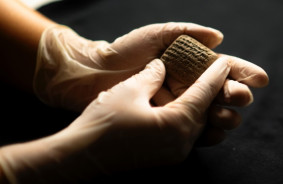Gallium nitride is touted as the next-generation semiconductor that may one day replace silicon, but research on this material is still in its early stages. Researchers from the Massachusetts Institute of Technology and other US institutions have decided to take the technology to the next level and tested the material at temperatures above 500℃.
Man's quest to explore the planets of the Solar System covers not only those far from the Sun. Extreme temperatures on Venus instantly melt lead, standard electronics wouldn't last a moment there.
Even if researchers sent a spacecraft with a heat-resistant exterior, onboard silicon-based electronics would weaken under extreme temperatures, rendering the exercise useless.
Gallium nitride can withstand temperatures above 500 ℃, but scientists actually didn't know how electronics designed using this material would perform above 300 ℃, the operating limit of silicon-based devices. To study the effect of temperature on ohmic contacts, researchers placed the contacts under 500℃ for 48 hours straight. They found that the contacts remained structurally intact, which is a promising sign for the development of high-performance transistors.
Despite gallium nitride being touted as the next-generation semiconductor, it will take years of study for scientists to achieve its widespread use. For example, researchers have very little information about its stability. The resistance of gallium nitride is inversely proportional to size. Although this can be circumvented, semiconductors also need to connect to other electronics, providing their resistance. This resistance, called contact resistance, remains fixed in the device, and an excess of it makes the devices inefficient.
To better understand contact resistance in gallium nitride devices, researchers from MIT created structures consisting of a series of resistors to measure contact resistance and material resistance. In collaboration with Rice University, researchers placed these structures on hot cartridges at 500℃ and measured their resistance. The structures endured inside a special oven for 72 hours to determine how resistance changes over time. Contact resistance remains unchanged even at high temperatures, however, after 48 hours, the material began to degrade. The research results were published in the journal Applied Physics Letters.














Komentāri (0)
Šobrīd nav neviena komentāra